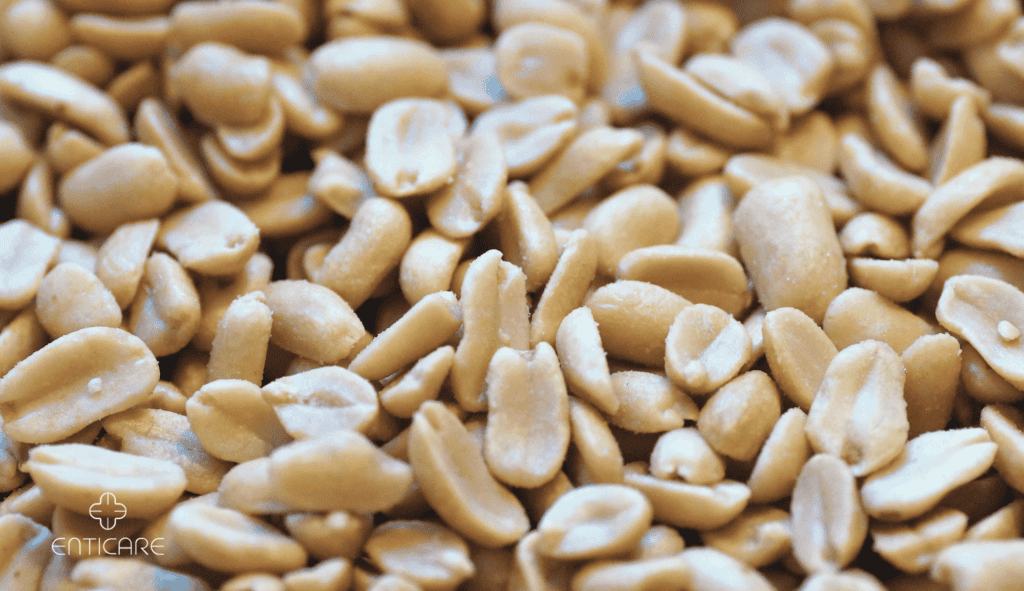Peanut allergies affect millions of people worldwide, and for those who suffer from this condition, avoiding peanuts is more than just a dietary choice — it’s a matter of life and death. Whether you’re managing a peanut allergy yourself, concerned about your child, or want to learn more about the condition, this guide will provide you with vital information.
In this post, we’ll dive into what peanut allergies are, their symptoms, how they’re diagnosed, and practical tips for avoiding peanuts safely.

What Is a Peanut Allergy?
A peanut allergy occurs when the body misidentifies peanut proteins as harmful substances, leading to an immune response that releases histamine and results in various symptoms. A peanut allergy is one of the most common and severe food allergies. When someone with this allergy consumes even a small amount of peanuts, their immune system overreacts, causing symptoms that range from mild discomfort to life-threatening anaphylaxis.
Immune System Response to Peanuts
The body sees peanut allergens as harmful invaders, prompting an immune response. During this reaction, the immune system releases chemicals like histamine, leading to histamine release that triggers allergic symptoms. These reactions can occur within minutes of exposure, making peanut allergies particularly dangerous.
Prevalence of Peanut Allergy
Peanut allergies are rising globally, especially in children. According to the American College of Allergy, Asthma, and Immunology (ACAAI), peanut allergies affect approximately 1-2% of children in the U.S. alone. While some children outgrow it, peanut allergies tend to persist into adulthood, necessitating regular re-evaluation and long-term management strategies.
Potential Cross-Reactivity
People allergic to peanuts may also react to other legumes like soy, peas, or lentils. Understanding potential cross-reactivity helps in avoiding other allergens that could trigger similar symptoms.
Learn more about peanut allergies from ACAAI here.
Causes and Risk Factors of Peanut Allergies
Peanut allergies are influenced by a mix of genetic, environmental, and lifestyle factors. Understanding what causes peanut allergy can help in managing and potentially preventing it. One significant risk factor is genetic predisposition, particularly family history. If one or both parents have a peanut allergy, their child is more likely to develop the same condition. Additionally, individuals with other common food allergies, such as an egg allergy or tree nut allergy, are at a higher risk of developing a peanut allergy.
Eczema is another important factor. Infants with eczema are more prone to developing peanut allergies. The timing of introducing peanuts into an infant’s diet also plays a role. Introducing peanuts too early or too late can increase the risk of developing a peanut allergy. Lastly, the hygiene hypothesis suggests that a lack of exposure to certain microorganisms in childhood may increase the risk of developing allergies, including peanut allergies. This hypothesis highlights the complex interplay between our environment and immune system in the development of food allergies.
Recognizing Symptoms of Peanut Allergy
Recognizing peanut allergy symptoms can save lives. Symptoms can range from mild reactions like itching to severe anaphylaxis. It’s important to understand the full spectrum of allergic reactions.
Mild to Moderate Symptoms
Mild symptoms might include hives, itching, or a runny nose. These symptoms usually appear soon after eating peanuts and, though uncomfortable, are not life-threatening.
Severe Symptoms
A severe allergic reaction, also known as a severe reaction, involves symptoms like wheezing, shortness of breath, and swelling of the throat. This type of reaction can escalate quickly, requiring immediate medical attention.
Anaphylaxis: The Life-Threatening Reaction
Anaphylaxis is a severe, potentially fatal allergic reaction that affects multiple systems in the body. Symptoms include difficulty breathing, a drop in blood pressure, and loss of consciousness. Those experiencing anaphylaxis need an emergency epinephrine injection, such as an EpiPen, followed by emergency care.
You can find more information on peanut allergy symptoms and anaphylaxis from Mayo Clinic here.

Foods to Avoid and Safe Eating Tips for Peanut Allergy Sufferers
Once diagnosed with a peanut allergy, you must be vigilant about avoiding peanuts and peanut products. Even trace amounts can trigger a reaction.
Reading Food Labels
Always read ingredient labels carefully. Manufacturers must list peanuts as an allergen on packaging. Look for phrases like “may contain peanuts” or “processed in a facility that handles peanuts,” as cross-contamination poses a risk.
Avoiding Cross-Contamination
Cross-contact occurs when peanuts come into contact with other foods or surfaces. When dining out, ensure that the restaurant uses separate cooking utensils and equipment for peanut-free meals.
Peanut-Free Alternatives
Many safe alternatives to peanut products exist, such as almond butter, sunflower seed butter, and soy butter. These can provide similar flavors without the allergic risk.
You can find more tips on avoiding peanuts from Food Allergy Research & Education (FARE) here.
Managing Peanut Allergies: Treatment and Emergency Care
Living with a peanut allergy requires more than just avoidance. It involves preparation for accidental exposure, understanding how to respond to allergic reactions, and knowing when to seek emergency care.
One treatment option is oral immunotherapy, which involves administering small quantities of peanut protein in a controlled environment to increase tolerance gradually. This process requires medical supervision and ongoing discussions with healthcare providers. While oral immunotherapy can aid in managing peanut allergies, it is not a cure, and patients must continue to avoid peanuts to prevent severe reactions.
Epinephrine Auto-Injectors
If you or your child has a peanut allergy, your doctor will likely prescribe an epinephrine auto-injector. Carry this device at all times, and make sure you know how to use it. In an emergency, it can be lifesaving.
Allergy Action Plan
Work with your allergist to develop a personalized allergy action plan. This plan will outline how to recognize symptoms, administer medication, and seek emergency care if necessary.
Allergy Desensitization
Some allergists may recommend desensitization therapy, a process where patients consume small, controlled amounts of peanuts under medical supervision. This therapy aims to reduce the severity of allergic reactions, though it is not a cure and should only be attempted under the care of an experienced allergist.
For a detailed guide on treating peanut allergies, visit the National Institutes of Health (NIH) here.

Living with a Peanut Allergy
Living with a peanut allergy requires constant vigilance, careful management, and keeping a food diary. Here are some essential tips to help you navigate daily life safely:
- Always read food labels carefully: Check for peanuts or peanut products in the ingredient list, and be aware of cross-contamination risks. Manufacturers are required to list peanuts as an allergen, so look for phrases like “may contain peanuts” or “processed in a facility that handles peanuts.”
- Avoid eating at restaurants or food establishments that may have peanut products: If you’re unsure, ask the server or chef about their food preparation procedures to ensure your meal is safe.
- Carry an EpiPen or other emergency medication: In case of accidental exposure, having an EpiPen or other emergency medication on hand can be lifesaving. Make sure you and those around you know how to use it.
- Inform friends, family, and caregivers about your peanut allergy: Make sure they know what to do in case of an emergency. Clear communication can prevent accidental exposure and ensure quick action if needed.
Conclusion: Take Action to Protect Yourself or Your Loved Ones
Understanding peanut allergies empowers you to take proactive steps to manage the condition safely. From recognizing symptoms and getting a proper diagnosis to avoiding risky foods and having an emergency plan in place, you can lead a full, healthy life despite having a peanut allergy.
If you suspect you or a loved one may have a peanut allergy, don’t wait to take action. Schedule an appointment with an allergist today to receive a comprehensive evaluation and develop a personalized treatment plan. Protect your health and peace of mind by scheduling an appointment at Enticare Allergy.

